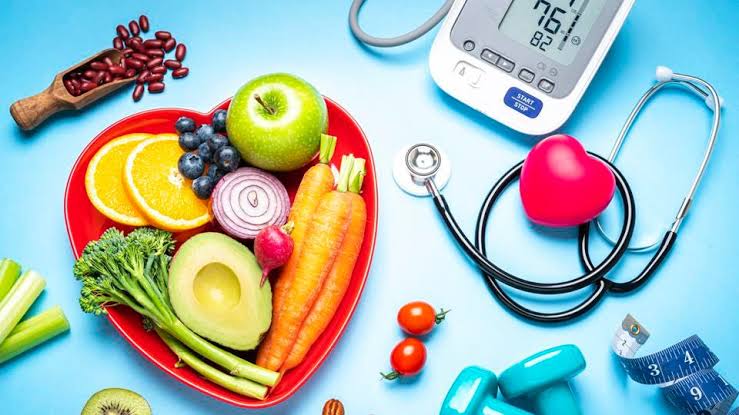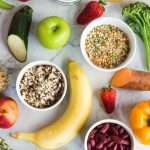How to treat high blood pressure with diet, lifestyle changes

Methods of treating high blood pressure hello followers site carebeautyco.com hypertension is a disease that affects many people around the world, and blood pressure refers to the force located on the walls of the arteries by blood being where and whenever narrowed arteries , the higher the blood pressure.
Methods for treating high blood pressure
If you’ve been diagnosed with high blood pressure, you can take some simple steps to learn how to change your lifestyle, diet and medications to treat high blood pressure.

The first method: your diet
Eating the Healthiest Proteins From Non-Meat Sources There are plenty of foods that contain protein other than meat
Legumes, seeds and nuts contain proteins, and these foods should be added to your diet.
These foods contain omega-3 fatty acids, dietary fiber, phytochemicals, and protein.
Eat up to 6 servings of these foods per week, not daily, as these foods are high in calories and should always be consumed in moderation.
Try including hazelnuts, kidney beans, kidney beans, almonds, sunflower seeds, flax seeds, lentils and fava beans in your diets and recipes to get the essential nutrients they contain.
Reduce your sodium intake.
The first option to lower high blood pressure is always lifestyle changes, and one of the common causes of high blood pressure is the high sodium in your diet.
Reducing your daily sodium intake lowers your blood pressure by several points
Doctors usually advise people with high blood pressure to limit sodium intake to 1500-2000 mg per day.
You can track your consumption by checking the sodium content on food labels, and the amount is in milligrams on all food labels.
Pay attention to the portion size. You may think you are consuming a small amount of sodium, but your consumption may exceed the amount you think you are consuming if the package contains more than one serving and you eat the entire package.
Many processed foods, including canned soups, are high in sodium
So be wary of processed foods when considering how much salt is getting into your body
Even processed foods that don’t taste salty may contain far more salt than a healthy amount
Do not add table salt to your meals. Ask your doctor if you can use a salt substitute. These products usually contain potassium chloride.
Eat more whole grains.
When you need to lower your blood pressure, you should eat whole grains.
Instead of eating processed grains like white bread, white rice and pasta, choose whole grains.
Doctors recommend 6-8 servings of grains per day, so try oats, brown rice, and quinoa.
When buying cereal, look for packages that say wholemeal or wholegrain as these contain better ingredients and are better for your heart health.
Eat pure protein.
When trying to treat high blood pressure, you should stay away from high-fat meals and eat lean protein instead.
Eat no more than 6 servings of lean meat or protein each week, and try meats such as chicken breast and fish.
Also eat other rich protein types such as soy and eggs When eating meat, be sure to remove any fat or skins from meat before cooking
And don’t fry it, instead grill it or roast it. Include more fish in your diet.
Fish like salmon contain beneficial omega-3 fatty acids that help reduce high blood pressure rather than contributing to it.
Increase your consumption of vegetables and fruits.
Vegetables and fruits are an essential part of any heart-healthy diet as natural vitamins and minerals help fight weight gain, help boost immunity, and keep blood pressure low.
Try to eat 4-5 servings of vegetables and fruits per day.
Pumpkin, tomatoes, broccoli, spinach, artichokes, and carrots are good examples of vegetables rich in fiber, potassium, and magnesium.
Use fruits like pineapple, mango, banana, raspberry, pomegranate, and strawberry as a natural sweetener and an alternative to the sugary dessert you crave.
Try to leave out the peels that can be eaten in vegetables to get more fiber and nutrients.
Limit sugary meals.
The processed sugars in sweet foods work against the healthy choices in your healthy diet, as they can make you gain weight and lead to poor blood pressure.
Reduce your consumption to less than 5 portions of food each week. If you’re bad at eating sweets, eat sweets that are low in sugar and fat.
Avoid fried sweets and those that contain a large amount of saturated fat as well.
Avoid alcoholic and caffeinated beverages.
You should avoid consuming alcoholic beverages and caffeine when you suffer from high blood pressure
Caffeine increases heart rate and blood pressure, especially when consumed in large doses.
Try to limit your daily caffeine intake to less than 400 mg, and also avoid alcoholic beverages, as they are harmful to blood pressure.
A small cup of coffee contains 100-150 mg of caffeine, and a small cup of tea contains 40-120 mg.
Avoid the large quantities that are usually served in popular coffee shops, as these quantities contain a very large amount of caffeine in each cup.

The second method: lifestyle change
Do exercise.
All types of exercise help treat high blood pressure, so start exercising for at least 30 minutes a day
Do aerobic exercises like walking, jogging, and swimming, and try to add strength training to your routine twice a week as well.
See your doctor to discuss the exercise program if you have health problems or if you are obese
Reduce the level of stress.
Stress, anxiety and depression can all increase your blood pressure, and learning how to cope with stress can improve your mental and physical health, so take some time each day to engage in a fun and relaxing activity.
This activity could be playing a game with family or friends, reading a book, watching your favorite TV show, taking a walk at your favorite place, or walking the dog.
Quit smoking.
Smoking is one of the most common preventable factors of death due to capillary vascular disorders, and smoking is harmful to health in general.
Especially on the health of the heart and lungs, the chemicals in cigarettes cause an increase in heart rate and constriction of blood vessels, which causes an increase in blood pressure.
The effects of smoking may also last for years, even after you quit. Cigarette smoke also causes your arteries to stiffen over time, and it doesn’t go away right when you quit.

The third method: the use of medicines
Thiazide-type diuretics.
In addition to lifestyle changes, your doctor will usually prescribe medications to lower your blood pressure. Thiazide diuretics help.
Such as chlorthalidone and hydrochlorothiazide reduce the volume of fluid in the heart and help relax the vessels and this leads to lowering blood pressure on them, which leads to lower blood pressure.
These medications were taken once daily. Side effects include low sodium and potassium levels
This can lead to dizziness, vomiting, panting, muscle weakness and an irregular heartbeat, and may also make you urinate more frequently.
Calcium channel blockers.
calcium channel blockers such as amlodipine, nicardipine, nifedipine, verapamil, and diltiazem
Powerful vasodilators work by relaxing the muscle in the blood vessel wall.
This leads to a decrease in blood flow, which leads to a decrease in blood pressure. Take these medications one to three times daily, as directed.
Possible side effects include swelling of the lower extremities and a decreased heart rate.
Ask your doctor about angiotensin II inhibitors.
Angiotensin II inhibitors include two classes of drugs, ACE inhibitors and angiotensin II receptor blockers.
ACE inhibitors include captopril, enalapril, and lisinopril, and include angiotensin II receptor blockers.
Medicines such as irbesartan, losartan and valsartan that block Angiotensin II, a hormone that narrows blood vessels and increases fluid retention in the heart.
Use certain types of visors.
There are two additional medications that are taken for high blood pressure, and they are taken when other methods and life changes don’t work.
Beta blockers include drugs such as carvedilol, esmolol, labetalol, metoprolol, nadolol, propranolol, and timolol, and alpha blockers include drugs such as doxazosin and prazosin.
These drugs work by blocking nerve signals from nerves and hormones that cause blood vessels in the body to narrow
These medicines are taken once in similar ways as they are taken one to three times a day according to the prescription,
Side effects of these medications include coughing, shortness of breath, and low blood sugar
High potassium level, depression, fatigue, weak sexual ability, headache, nausea, weakness and weight gain.
herbal remedies.
Although there is no scientific evidence, there are many herbal remedies that are believed to help with high blood pressure.
As a rule, do not use these unproven herbal remedies as a substitute for proven medical advice.
Instead, supplement your diet with these herbs, if approved by your health service provider.
Holy Leaf Extract An herbal remedy that benefits blood vessels. Drink the extract as a tea to improve blood circulation and blood flow to the heart
Fish oil, which is an omega-3 fatty acid, may help metabolize fats and lower blood pressure.
Other herbal remedies, such as extracts of garlic, licorice, coconut water, ginger, cardamom, and hawthorn, fight high blood pressure and may mimic the properties of medications used to lower blood pressure






